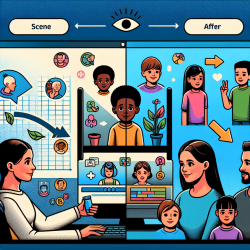The study "Comparative Cephalometric Study Between Nasal and Predominantly Mouth Breathers" provides valuable insights into the craniofacial differences between nasal and mouth breathers. As a practitioner, understanding these differences can significantly enhance your diagnostic and therapeutic skills. This blog will explore key findings from the study and suggest practical applications to improve outcomes for children receiving online therapy services from TinyEYE.
Understanding the Study
The study aimed to evaluate the correlation between respiratory patterns and craniofacial dimensions using cephalometric analysis. The sample included 50 teleradiographies of young female patients aged 9 to 12 years, divided into two groups: nasal breathers and predominantly mouth breathers. The study found no significant differences between the groups for the measured variables, suggesting that oral breathing may not be a primary factor in malocclusion for this sample.
Key Findings
- Craniofacial Growth Patterns: Both nasal and mouth breathers exhibited a mesofacial pattern with no significant differences in the FMA, SN-GoGn, and Y-axis angles.
- Facial Profile: Both groups showed a convex profile with no significant differences in the Z-angle.
- Apical Base Relationships: No significant differences were found in the SNA, SNB, and ANB angles between nasal and mouth breathers.
- Facial Heights: Both groups exhibited similar anterior and posterior facial heights, with no significant differences in the facial height index.
Implications for Practitioners
Understanding that nasal and mouth breathers may not exhibit significant craniofacial differences can influence your approach to diagnosis and treatment. Here are some practical applications:
- Comprehensive Assessment: Use a combination of clinical interviews, physical exams, and cephalometric analysis to assess respiratory patterns and craniofacial morphology.
- Multidisciplinary Approach: Collaborate with otolaryngologists and orthodontists to address underlying causes of oral breathing, such as nasal obstructions or allergies.
- Focus on Functional Outcomes: While craniofacial differences may not be significant, improving nasal breathing can enhance overall health and quality of life for children.
Encouraging Further Research
While this study provides valuable insights, it also highlights the need for further research. Longitudinal studies that track changes over time and include larger, more diverse samples can provide a more comprehensive understanding of the relationship between respiratory patterns and craniofacial development.
To read the original research paper, please follow this link: Comparative Cephalometric Study Between Nasal and Predominantly Mouth Breathers.










